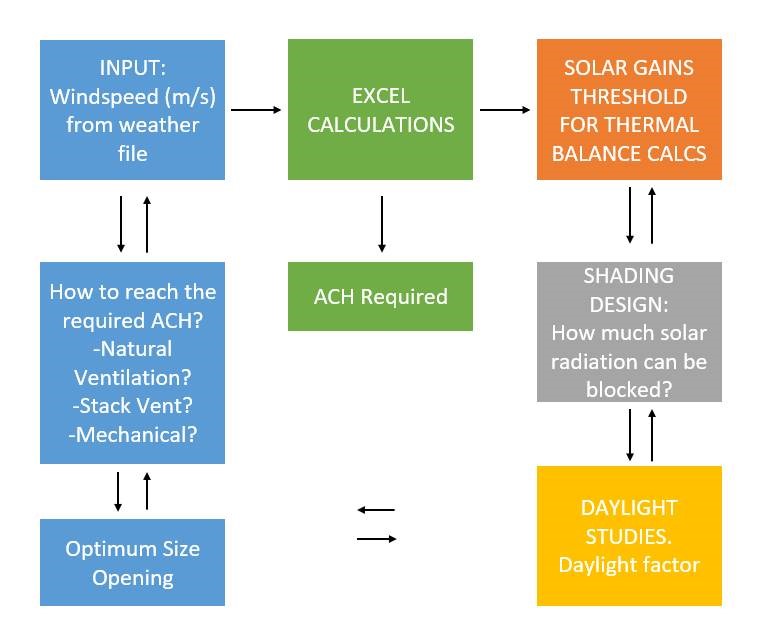Another virtual meeting took place on Wednesday morning. Pleasantly undisturbed by technical problems, the ongoing tasks from the complex of thermal comfort, shading and daylighting came up first.
This was followed by new information that was both bad and good.
Originally, the dormitory was to be connected to the existing infrastructure of the neighboring hospital. However, this is not possible. So further development costs for electricity and water have to be considered in the calculation. Positive aspect here is:
The sustainable approach that the building could also be operated independently of the local supply becomes even more interesting and should be pursued specifically. It is necessary to estimate and compare the costs.
The roof area would probably suffice for a self-sufficient energy supply.
The building is to be constructed with one less floor initially due to the reduced budget but can be retrofitted later with support of a light steel construction. This means additional costs for the use of photovoltaics, since they have to be removed again for the addition of another floor. There is also the question of whether a "hybrid power supply", i.e. with supplementary, redundant power generation by a generator, would be a sensible solution. It also eliminates the need to house domestic water tanks on the roof. Water tanks on the site are possible, but they would also have to be raised later. However, one will also have to look more closely at systems with pressure pumps for collection tanks in the ground.
Interesting advice on rainwater harvesting was provided by meeting participant Arno Coerver. He is a water, sanitation and hygiene (WASH) specialist with Malteser International.
He has a lot of experience with "Sky Hydrant" systems, which can clean the collected rain by ultrafiltration to give it drinking water quality and, thanks to self-cleaning with low maintenance costs, will be reliable for years.
In the context of self-supply, there is also the question of whether it is useful to have your own deep borehole, from which water can also be taken as needed for safety.
The expert also advises separating gray water, which runs off from showers and when doing laundry, from the wastewater that comes through the toilets.
This saves volume and maintenance on the part of "septic tanks" or "septic digesters."
Graywater can be used untreated to irrigate plants.
"Urban gardening", i.e. growing vegetables on the premises or perhaps part of the roof would thus become possible. There is also an environmentally friendly way to treat it on site and allow it to percolate, provided there is enough space for a "constructed wetland" on the site or along the building.
The alternative methods of treating wastewater from toilets, such as composting or biogas generation, need storage capacity in the form of a second tank so that the disposal system never falters. This must be taken into account in the cost, but also in the planning, if you want to favor a later retrofit.
Arno Coerver: Malteser International.org
Design / Planning: Zero Carbon Designs
Climate-friendly building material production / project developer: Impact Building Solutions Foundation
